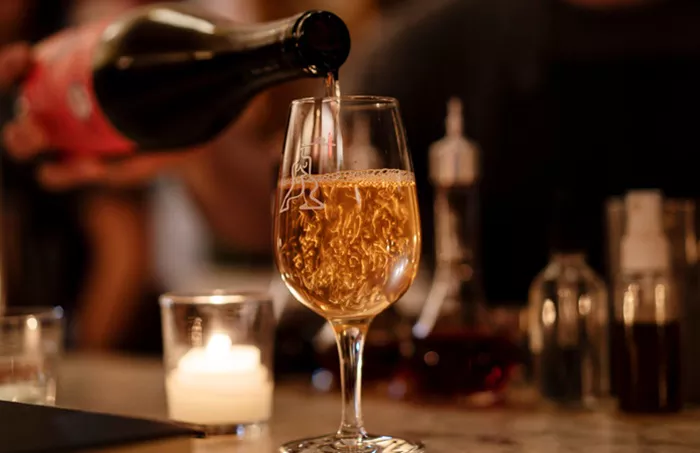Sancerre is a renowned wine region located in the Loire Valley of France. It is famous for its crisp, mineral-driven Sauvignon Blanc wines. The region’s unique terroir plays a crucial role in the flavor profile of Sancerre wines. The combination of chalky soil, cool climate, and traditional winemaking techniques contributes to the wine’s distinct characteristics. Because of these factors, Sancerre is often priced higher than many other wines.
The demand for Sancerre has grown globally in recent years. Wine enthusiasts appreciate its high quality and unique taste. However, the cost of producing Sancerre wine is significant. Various elements contribute to its high price, including production methods, grape quality, and market demand. Understanding these factors can help consumers appreciate why Sancerre is considered a premium wine.
Terroir and Its Importance
The terroir of Sancerre is one of the primary reasons for its high price. Terroir refers to the environmental factors that influence the characteristics of the wine, including soil type, climate, and geography. Sancerre’s vineyards are planted on limestone and clay soils, which provide excellent drainage and essential nutrients for the vines. This unique soil composition allows the grapes to develop intense flavors and aromas.
The cool climate of the Loire Valley also plays a vital role. The region experiences significant temperature variations between day and night. This fluctuation helps retain acidity in the grapes, essential for producing balanced wines. The combination of cool nights and warm days enhances the aromatic complexity of Sancerre wines, making them more desirable.
Labor-Intensive Winemaking Process
Producing high-quality Sancerre is labor-intensive. From vineyard management to winemaking, every step requires careful attention. Vineyards are often hand-harvested to ensure that only the best grapes are selected. This method is more costly than machine harvesting but is essential for maintaining quality.
After harvesting, the grapes undergo careful sorting and crushing. Many Sancerre producers use traditional methods, which can be time-consuming. Fermentation usually takes place in temperature-controlled stainless steel tanks or oak barrels, depending on the winemaker’s style. This process allows for greater control over the final flavor profile of the wine. The aging process can also add to the cost, as it requires time and storage space.
See Also: How Many Carbs Are in a Glass of Pinot Noir?
Grape Quality and Selection
Sancerre is predominantly made from Sauvignon Blanc grapes. The quality of these grapes is paramount. To achieve the desired flavor profile, winemakers select only the best fruit from specific vineyard sites. Some vineyards produce grapes that are more concentrated and flavorful than others, leading to a higher price for those wines.
Additionally, some producers practice biodynamic or organic farming. These methods can yield lower quantities of grapes but result in higher-quality fruit. The commitment to these sustainable practices often leads to increased costs, which are passed on to consumers.
Market Demand and Brand Recognition
The popularity of Sancerre has surged in recent years, driven by both its reputation and consumer demand. As wine lovers seek out high-quality, refreshing white wines, Sancerre has become a go-to choice. This increased demand puts upward pressure on prices.
Furthermore, brand recognition plays a significant role. Many Sancerre producers have established themselves as premium wine brands. Consumers are often willing to pay more for wines from well-known producers. This brand loyalty can drive up prices, as consumers associate higher costs with better quality.
Comparative Pricing with Other Wines
When comparing Sancerre to other wines, its price can seem steep. However, it is essential to consider the production costs involved. While some wines are mass-produced and can be sold at lower prices, Sancerre’s limited production and artisanal methods justify its higher cost.
For example, many Sauvignon Blanc wines from different regions are available at lower prices. However, they may not offer the same complexity and depth that Sancerre provides. Consumers seeking a unique and high-quality wine experience may find that the investment in Sancerre is worthwhile.
Conclusion: The Value of Sancerre
In summary, several factors contribute to the high price of Sancerre. Its unique terroir, labor-intensive winemaking process, high-quality grape selection, and increasing market demand all play crucial roles. For wine enthusiasts, the cost of Sancerre reflects the quality and craftsmanship involved in its production.
Understanding these factors allows consumers to appreciate the value of Sancerre. While it may be more expensive than other wines, its distinctive flavors and aromas make it a worthy choice for special occasions or everyday enjoyment. When you sip a glass of Sancerre, you are not just tasting wine; you are experiencing the rich heritage and meticulous work of its producers.
You Might Be Interested In:


